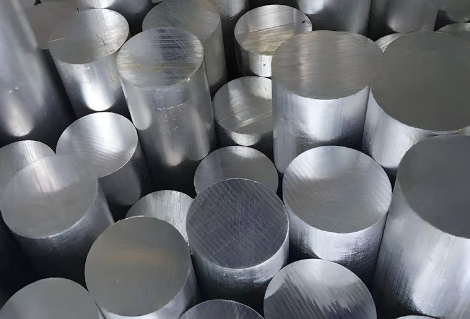6061 aluminum alloy is a versatile and widely used material known for its excellent mechanical properties and corrosion resistance. Among the different tempers of 6061 aluminum, 6061-T651, 6061-T6, and 6061-T6511 each offer unique benefits tailored to various applications. Understanding the distinctions between these tempers is crucial for selecting the right material for specific engineering and manufacturing needs. Today, we’ll talk about the differences between 6061-T651, T6 and T6511.

What’s 6061-T651
6061-T651 aluminum alloy is a frequently used structural aluminum that has undergone a heat treatment process (T651) to introduce strengthening precipitates within the material, making it harder and stronger than the bare alloy. It provides good strength and corrosion resistance properties.
Applications:
Machine structures – As a structural metal, 6061-T651 is often used in fixtures, mounts, frames, and other parts that make up machinery. Its strength and corrosion resistance make it suitable.
Aircraft components – Due to its high strength-to-weight ratio, 6061-T651 is widely used in secondary aircraft structures like braces, brackets, and non-critical interior parts.
Automotive components – Various aluminum automotive parts like suspension components, engine mounts, and wheels can be made from 6061-T651 for its light weight.
Bicycles and bicycle frames – As a bike frame material, 6061-T651 balances durability and weight for a comfortable ride. Its corrosion resistance is important for outdoor use.
General fabrication – The alloy’s workability makes it adaptable for structural framing, enclosures, supports, and other fabricated structures.
Pipe and tube fittings – Its formability lends itself to bending, so 6061-T651 is often used for elbows, tees, flanges and other plumbing/piping fittings.
Consumer goods – Common household/industrial items like ladders, furniture, exercise equipment utilize 6061-T651 for the right properties.
Marine applications – Its corrosion resistance to seawater makes 6061-T651 suited for docks, rigging, deck hardware and other nautical uses.
What’s 6061-T6
The T6 refers to the temper or heat treatment applied. T6 temper involves solution heat treatment, cold working, and artificial aging. Solution heat treatment involves heating the aluminum above the solvus temperature to form a homogeneous solid solution of alloying elements in the aluminum. Cold working is then applied, usually stretching or bending, to introduce dislocations in the material. This strengthens it. Artificial aging completes the T6 process. The aluminum is heated to just below the solvus to form strengthening precipitates within due to dissolved alloying elements.
Applications:
Aircraft components – Secondary structural parts like brackets, braces, covers. Good strength to weight.
Automotive components – Wheels, suspension parts, brackets, panels. Lightweight yet durable.
Bicycle frames – Balances strength and weight for comfort. Holds up well to weather.
Industrial equipment frames – Scaffolding, ladders, machinery frames where ruggedness is needed.
General fabrication – Structural frames, supports, braces, enclosures. Worked easily.
Electronics enclosures – Housings for devices, servers etc. Dissipates heat well.
Boat/marine components – Rails, brackets, hatches. Doesn’t corrode in saltwater.
Piping/plumbing fittings – Elbows, tees, flanges. Formable for bends yet strong.
Construction fixtures – Door/window frames, siding, roofing. Light for transport.
Lawn/garden equipment – Edgers, trimmers, fertilizer spreaders. Durable for outdoors.
Sports equipment – Bicycle components, baseball bats, tennis rackets. Appropriate strength.
What’s 6061-T6511
6061-T6511 undergoes T6 tempering with additional cold rolling for improved formability and a soft temper compared to regular T6. This makes it easier to machine, bend, form or weld. Solution heat treats the aluminum to form a homogeneous alloy. Cold working introduces dislocations to strengthen the material. For 6061-T6511 this is typically cold rolling. Artificial aging then forms precipitation strengthening within the aluminum. The additional digits ‘5111’ after the T6 indicate the specific temper. For 6061-T6511, the ‘5’ refers to an extra reduction in hardness compared to standard T6. The ‘111’ indicates it was cold rolled to 1/16 inches thick or less.
Applications:
Automotive body panels – Due to its ability to be formed via cold rolling, 6061-T6511 is often used for outer body panels on cars, trucks, etc.
Electronic enclosures – The alloy’s workability and strength make it suitable for housings, casings and enclosures for electronics and appliances.
Machinery/equipment housing – Anything requiringrigid, durable structures that also need fabrication are candidates, like tooling/production equipment bodies.
HVAC ductwork – 6061-T6511 can be used to form ventilation ducts, plenums, louvers due to its formability and corrosion resistance properties.
Signage/displays – Thanks to cold rolling, this alloy allows shaping sheet material into display backs, framed components and other signage/display applications.
Transportation structures – Its fabrication qualities lend 6061-T6511 to train/subway car panels, bus interior components, aircraft fuselage skins and glazing frames.
Enclosures for harsh environments – Outdoor rated electrical/junction boxes, meter housings, telecom boxes where a weatherable material is needed.
Medical equipment – Monitors, imaging hardware, instrument housings, where a stable yet formable alloy is required.
6061-T651 vs 6061-T6 vs 6061-T6511, What Are the Differences
6061-T651:
Highest strength of the three due to additional cold working (stretching) during processing.
Not as formable or workable as the others due to this extra cold working.
Used for demanding structural applications where maximum strength is needed.
6061-T6:
Medium strength level – stronger than bare 6061 but not as strong as T651.
More workable than T651 due to less cold working during T6 temper.
Good combination of strength and formability for many general applications.
6061-T6511:
Lowest strength of the group due to additional reductions during processing.
Most formable/workable – the T6511 temper allows for extra cold rolling into thin gauge sheets.
Used where forming of complex shapes is required like automotive body panels.

